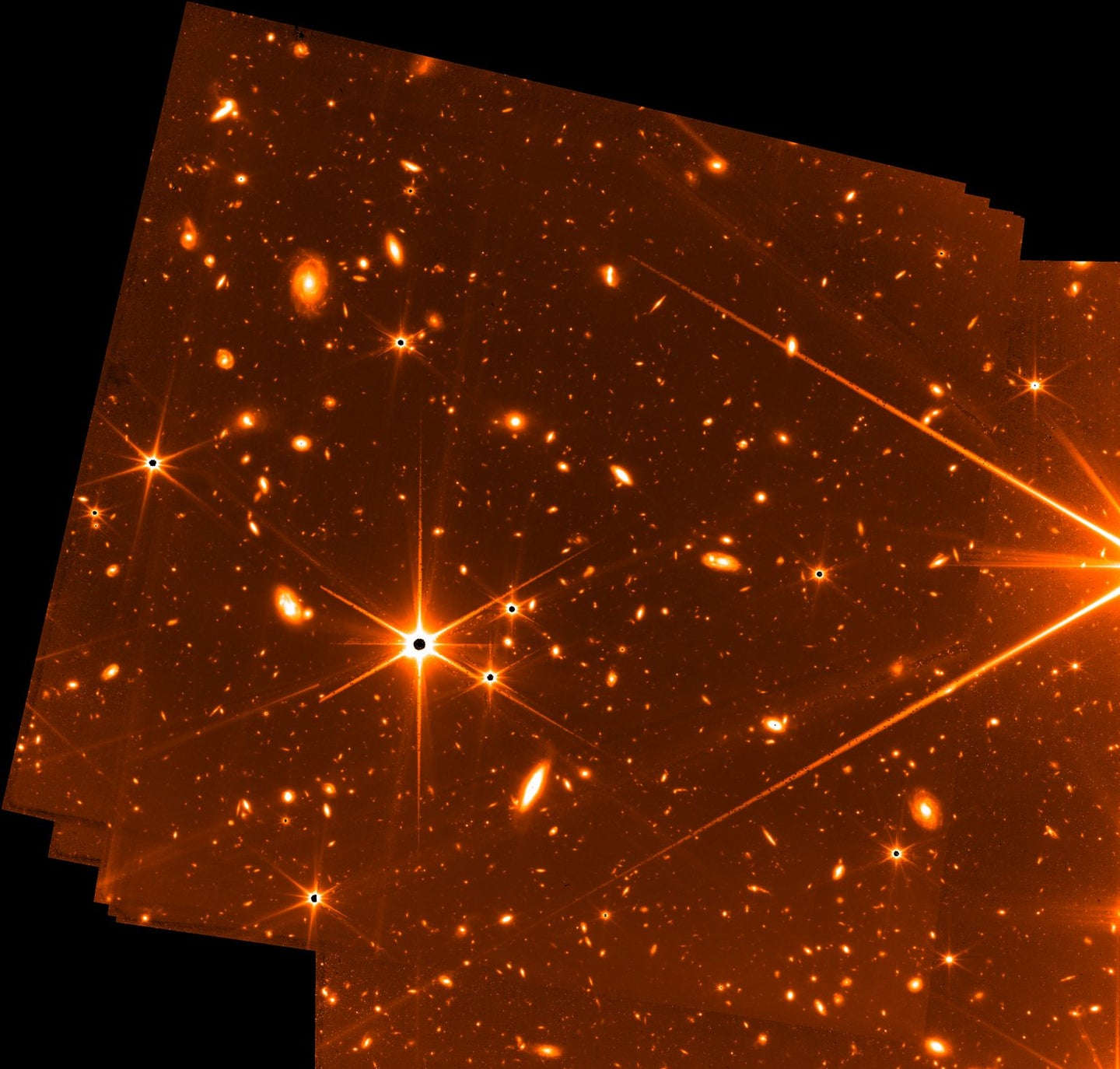
The first scientific full-color photos from NASA’s James Webb Space Telescope (JWST), the successor to Hubble, are due to be released on July 12. But, to get everyone excited, NASA has just dropped an incredible shot of deep space, captured by Webb’s Fine Guidance Sensor (FGS), incidentally, during other testing. According to NASA, it is, at least for a few more days, the deepest image of the universe ever captured and “provides a tantalizing glimpse at what the telescope’s science instruments will reveal in the coming weeks, months, and years.”
Webb’s target acquisition system
Related: One of the Webb telescope’s first missions will scope out two hot exoplanets
The funny thing about the FGS is that it isn’t even a camera—it’s a guidance system designed to help the JWST’s other instruments lock on to distant stars and galaxies. While it’s always been capable of capturing images, they have typically been thrown out because the JWST has limited bandwidth to work with. Since it can only transfer data from two instruments at a time, it’s generally had much more important photos—like the occasional selfie—to send back to NASA.
However, during a week-long stability test in May, the team realized there was enough spare data bandwidth to send the imagery from the FGS back to Earth. It uses the same telescope as the other instruments, so it’s a nice little sneak peek at the stars.
A glimpse of what’s to come
Related: A fully aligned James Webb Space Telescope snaps its first photo and exceeds ‘every expectation’
NASA itself calls the “engineering test image” a bit “rough-around-the-edges.” It was taken over eight days and uses 72 overlaid exposures totaling over 32 hours of exposure time. (You can see some of the overlap around the edges of the image.)
The centers of the stars are also blown out because they are bright enough to saturate the JWST’s detectors. NASA has strategies to handle this when it’s making scientific measurements but didn’t use any of them for this test.
Other than the handful of stars—which appear with six “diffraction spikes” because of the JWST’s six-sided mirrors—everything else in the shot is a distant galaxy. As Jane Rigby, Webb’s operations scientist at Goddard Space Flight Center explains, “The faintest blobs in this image are exactly the types of faint galaxies that Webb will study in its first year of science operations.” The more powerful instruments onboard will be able to reveal a lot more from similar photos.
The image is also in false color. It was monochromatic, but it has been given a white-yellow-orange-red gradient to represent the progression from the brightest to dimmest objects.
What to expect next week
The JWST is now focused and gazing out at the universe. The first “real science observations” were made in June, and we can expect to see those images very soon. They will be in full color and show us views we’ve never seen before.
Full scientific operations will begin in mid-July and that’s when things will get really exciting. According to NASA, JWST will make “breathtaking discoveries about stars, exoplanets, galaxies, and even moving targets within our solar system.” After everything Hubble has discovered over the last 30 years, it’s got a lot to live up to.
The post This is the deepest image of the universe ever captured (for now) appeared first on Popular Photography.